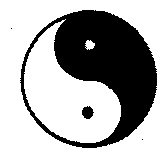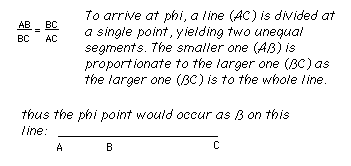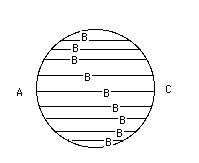The earliest known Taoist text seems to be the I Ching, the Book of Changes. The I Ching writings have the outward form of oracles (cf. provocation). After the I Ching, the most famous and popular of Taoist classics is undoubtedly the Tao te ching. This text was compiled and recorded at a time of great conflict, not surprisingly therefore, much of the Tao te ching is presented in terms of advice to rulers. The reputed recorder of it is Lao-tze. For Taoists the present is the moving infinity, it is the place of the Relative. Relativity seeks adjustment; adjustment is art. The art of life lies in the constant readjustment to our surroundings. Taoism accepts the mundane as it is and, unlike Confucians and the Buddhists, tries to find beauty in our world of woe and sorry. The Sung allegory of the Three Vinegar Tasters explains admirably the trend of the three doctrines. Sakyamuni, Confucius and Lao-tse once stood before a jar of vinegar -the symbol of life- and each dipped in his fingers to taste the brew. The matter of fact Confucius found it sour, the Buddha called it bitter, and Lao-tse pronounced it sweet. The Taoists claimed that the comedy of life would be more interesting if everyone would preserve the unities, the balance. To maintain the proportion of thin gas and give place to others without losing one's own position was the secret of success in life. We must know the whole play in order to properly act our parts; the conception of totality must never be lost in that of the individual. In ethics the Taoist had great problems with the laws and the moral codes of society, for them right and wrong were but relative terms. Our standards of morality are based on the needs of society in the past, but society will to remain the same. Observance of tradition involves a constant sacrifice of the individual to the state. Education, they said, in order to keep up the big illusion, encourages a form of ignorance. Our anxieties are the result of our frightful self-consciousness. We find it hard to forgive others because we know that we ourselves are in the wrong. We seek refuge in pride because we are afraid to accept the truth about ourselves.
It is creative apperception more than anything else that makes the individual feel that life is worth living.
D.W. Winnicott
This is exactly what Winnicott refers to. This is in fact what creativity is all about. Creativity is to be found by the individual by perceiving the environment and making the connection. Lao-tse illustrates this by his favourite metaphor of the vacuum. He claimed that only in vacuum lay the truly essential. The reality of a room, for instance, is the be found in the vacant space enclosed by the roof and walls, not in the roof and walls themselves. Creativity lies in the vacuum an individual can create within himself, vacuum has every potential because it is all containing, the whole can always dominate the part.
As physicists tells us the universe started with the big bang. The motion and sounds of this big bang are what makes the universe expand and grow bigger and bigger. This big bang, the Taoists say, is the Tao the motion that makes everything move or grow.
The nature of the Tao
The Tao is empty and yet useful;
Somehow it never fills up.
So profound!
It resembles the source of All Things.
Lao-tse
Very much like a stone thrown into a pond, the ripples and waves will make everything in the pond move. It is the individual's task to find the natural movement and adjust to that, then one can act in accordance with the laws of nature. Crossing a big river in a small boat will be easier when one goes with the stream and not against it. The difficulty may very well be to find out which way the rivers streams.
Creativity is a potent force, when the correct environment is created, it combines with the dormant force in the environment and becomes a liberating energy (Chinese Ch'i). It is considered the life force and symbolized by yin and yang.

Knowing polarity
The Tao produced the One.
The One produced the Two.
The Two produced the Three.
The Three produced All Things.
All things carry Yin and hold to Yang;
Their blended influence brings Harmony.
Lao-tse
In the Tao te ching a way out of dualistic thinking is given. Dualistic thinking puts two different forces or concepts opposite one another and ascribes them an independent value. This is the source of conflict. Conflict between man and woman, left and right, old and young, black and white. Dualistic thinking creates rigidity. As soon as we take an active viewpoint, judge, we are mistaken, for what may help us today may very well work against us tomorrow. Creative thinking means accepting that nothing is separate. Everything is connected. What we perceive is the field of tension between two forces, itself remaining in the background (Ch'i). Instead of two forces we are dealing with three forces. Zen calls this 'mu', no-thing, not yes, not no, not this, not that.
The Tao stresses the continual change and transformation and tries to strengthen intuitive thinking. Western dualistic thinking is by and large based on the logical and rational. Eastern thinking seems to find its source in the spatially oriented right brain-half. The subjective process is the leading theme.
This dynamic flux can be found in every individual, for instance, the difference between my real self and my ideal. The relation between me and my parents, children, friends, colleagues and work. It shows in the manner I deal with my bicycle or car, and in my reaction to the universe.
It is also found in every pair of concepts. When I have two sticks, the one may be long and the other short. When I have two solutions, the one may be good and the other bad. Long and short, or good and bad are possible because of the difference between long and short and good or bad, respectively. On basis of this difference the one is long/good and the other short/bad. If a third stick or solution is found, everything may change. So we see that the difference creates the opposition. However, the opposite is just as true: the opposition creates the difference. In fact the one is not short and the other not long, but I want to see them as such. And just because I put these concepts on these objects does not make that way. So I now have described three entities: long/good, short/bad and the difference. If one of the three changes the other two change as well, for there would no longer be a difference. The opposition is therefore no separation but a distinction. The three are connected and together create a reality.
The opposition (long/short, good/bad, yin/yang) can be seen as reflecting boundaries of the same reality. However, everything changes continually 'You can step into same river only once, as the water contiues to flow'), life knows no fixed boundaries. The trinity will disappear as another stick or a different solution will be found. In order to actually see the flow of the events 'emptiness' is required. The observer has to have an open mind. (cf. flexible thinking).
Yin and yang can be seen as a dynamic, synergetic model for creativity. It is the creativity at work in artists who are the pioneer in the frontier of new form. They work their materials into new designs, exploring, discovering, expanding and finally dissolving the old into the new. It is the process that requires most attention in creativity.
Stuart Litvak and A. Wayne Senzee explain this very well in their highly interesting book Toward A New Brain. They call it dynamic design. The ancients, they state, were masters in combining mathematics and metaphor in a fully human balance. Their law, religion, philosophy, art, and science are the rich evidence. We have more technical knowledge, but without their earth-wisdom it is a double-edged sword, the sharpest edge of which is held against ourselves. The Classical Greeks, Persians, Indians, Arabs, and others searched for proportions and found facts along the way. Western people have sought and hoarded facts alone and lost proportion - there are simply too many facts and too little room to store them in a present-day brain.
In geometry the Greeks discovered what must be the key cipher to decoding the infinities of revealed form. This is the phi (ø) ratio, or 'golden mean", stated algebraically as:

There can be only one phi point on a given line. a line will yield a curve (logarithmic) called the 'golden spiral' when it connects the phi points of a series of progressively smaller rectangles derived from the largest. The T'ai chi (yin-yang) symbol is such a golden spiral. Digited, the 'golden ratio' is 1:1.618 ... to infinity.

The golden ratio is a unique proportion in that it is the only irrational (not amenable to an exact figure) number that can be subdivided endlessly. It is an ultimate symbol of the eternal and limitless possibilities of consciousness i.e. creativity in finding new ideas. It is as Chuang-tsu said: "There is no end to smallness."
And so there seems no end to creativity.